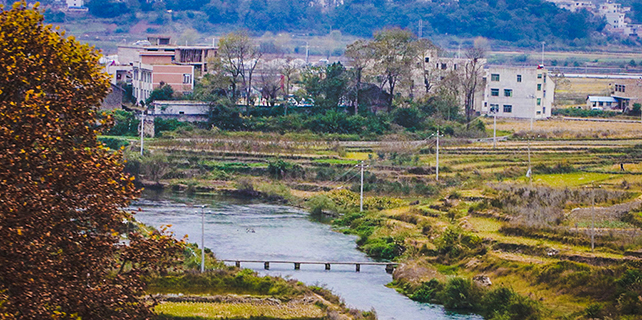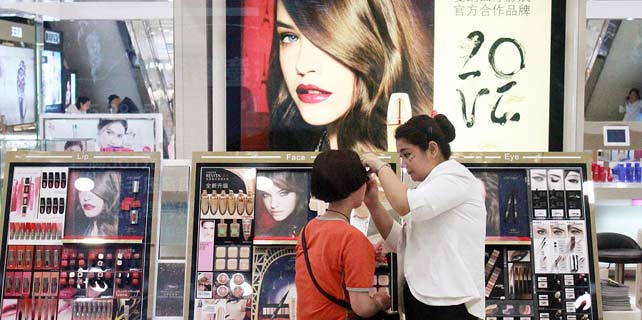Five centuries of art
|
Turkeys, a collaborative work by Giuseppe Castiglione, a Qing imperial court painter from Italy, and his Chinese colleague, Jin Tingbiao, will go under the hammer at the upcoming Poly auction.Provided to China Daily |
An auction plans to sell works by master painters spanning half a millennium, tapping into a string of classical Chinese art exhibitions at the Palace Museum. Lin Qi reports.
The Palace Museum in Beijing has mounted several blockbuster exhibitions of classical Chinese paintings and calligraphy over the past two years. Thanks to successful publicity campaigns, word about these shows went viral on social media, making it the most effective means for drawing visitors.
At the same time, works by classical painters featured in these exhibitions have become highly sought after among collectors, and auction houses have duly responded.
Poly International Auction will sell works by several master painters who lived between the 13th and 18th centuries during its major winter sale in Beijing from Dec 16 to 20.
One highlight is a calligraphic copy of The Heart Sutra, a popular Buddhist scripture written by Zhao Mengfu (1254-1322), a noted calligrapher, painter and scholar who hailed from the imperial family of the Song Dynasty (960-1279).
Zhao is at the center of a special exhibition currently running at the Palace Museum that shows his paintings and calligraphic works, as well as works by other artists of his time and the following generations of artists who were influenced by Zhao.
Li Xuesong from Poly International Auction's department of classical Chinese painting and calligraphy says the Palace Museum has published an album to catalogue Zhao's complete works - including the piece to be auctioned to coincide with this exhibition.
Zhao's versatility in his appraisal of art, literature, music and antiquity won him recognition from Kublai Khan, the founding emperor of the Yuan Dynasty (1271-1368). Zhao was repaid the courtesy by succeeding Yuan rulers until his death.
"He proposed many views on art that laid the foundations for the rise of Chinese literati painting," Li says. "He argued that people should drop the overly refined, soft brushwork that was popular at the time and incorporate a cruder style of calligraphy so that the paintings could reflect the scholarly pursuits of simplicity and truth to nature."
He says Zhao appealed for the revival of the elegant temperament that defined the art of the Tang Dynasty (618-907), and the calligraphy going on sale also reflects his philosophical desire to achieve a balanced state of being.
"Zhao was inevitably exposed to the harmonious coexistence of Buddhist, Taoist and Confucian ideas at the time."
Liaoning Provincial Museum holds another version of Zhao's The Heart Sutra in its collection.
Tang Yin is one of the four great painters of the Ming Dynasty (1368-1644). He is also among the artists who viewed Zhao a major source of inspiration, and his works are also displayed at the Palace Museum's exhibition.
Poly International Auction will put on sale Tang's Landscape Painted for Yuequan, a work he created for a friend. Yuequan was the abbot of a temple in Nanjing and was befriended by many important figures in local art and political circles.
The painting bears calligraphic postscripts composed by Zhu Yunming and Wen Zhengming. The two artists and Tang are among the four literati from Wuzhong, now a part of Suzhou, in Jiangsu province. Li says the three artists' collaboration on this painting also indicates Yuequan's prominent social standing.
The painting shows a figure sitting on the ground, gazing at the lake before him. Li says the figure could be Yuequan himself, because the painting reflects a social trend in the mid-Ming era when learned dignitaries commissioned paintings that either showed the landscapes of where they lived or portrayed themselves in their ideal environments.
The upcoming auction will also feature a mountain-and-water painting by 17th-century painter Kun Can. He is hailed as one of the four monk artists of the early Qing Dynasty (1644-1911), along with Zhu Da, Hong Ren and Shi Tao. Earlier this year, the Palace Museum held an exhibition devoted to their accomplishments.
The sale will also include Turkeys, a painting by Giuseppe Castiglione (1688-1766), an Italian Jesuit missionary living in China. He served as a court painter during the reigns of three Qing Dynasty emperors: Kangxi, Yongzheng and Qianlong.
Li says it was not until Emperor Qianlong took the throne that Castiglione was elevated to the prestigious position of court artist. He adds that the bulk of his paintings are kept at the Palace Museums in Beijing and Taipei, while a few others remain in the hands of private collectors.
On the order of Qianlong, Castiglione collaborated with his Chinese colleagues, Fang Cong and Jin Tingbiao, to create two pairs of paintings. Each pair includes a painting of two turkeys and a painting of a goat.
As for the set Castiglione worked on with Fang, the goat painting is now housed at Taipei's Palace Museum, while the other piece is believed to be lost.
The painting due to be auctioned is a collaboration between Castiglione and Jin. Li says the work featuring the goat is in the hands of a South American collector.
Contact the writer at linqi@chinadaily.com.cn










